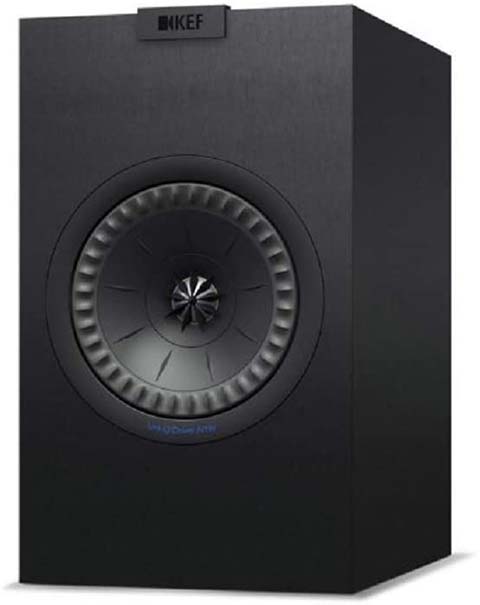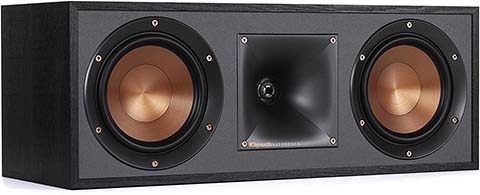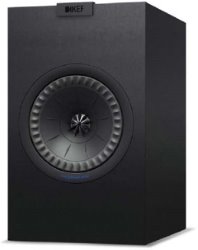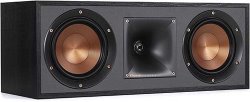KEF Q150 vs. Klipsch R-52C

| KEF Q150 Bookshelf Speakers | Klipsch R-52C Center Channel Speaker |
| MSRP | |
| $600 | $350 |
| Dimensions (H × W × D) | |
|
11.92” × 7.08” × 10.94” 303mm × 180mm × 278mm |
7.30” × 18.75” × 7.60” 185mm × 476mm × 193mm |
| Power Type | |
| Passive | Passive |
| Frequency Response | |
| 51-28,000 Hz | 89-21,000 Hz |
| ASR Score | |
| 4.8 | n/a |
| ASR Score w/Subwoofer | |
| 6.9 | n/a |
|
Amazon.com
|
Amazon.com
|
Key Takeaways
TLDR Summary: In the realm of high-fidelity audio, the KEF Q150 bookshelf speakers and Klipsch R-52C center channel speaker serve different purposes. KEF's Q150s shine with a clear, refined soundstage ideal for stereo listening, thanks to their Uni-Q driver array. Klipsch's R-52C, with its horn-loaded tweeter, is tailored for dialogue clarity in home theater systems. Both offer distinct sonic signatures: KEF's balanced warmth versus Klipsch's dynamic punch. Ultimately, choosing between them hinges on whether you're curating a music-centric setup or seeking to anchor your cinematic experience with crisp, articulate vocal reproduction.
Speaker Comparison
When it comes to building an immersive audio environment, whether for a home theater setup or a high-fidelity music system, the choice of speakers is paramount. In the realm of quality sound reproduction, two notable contenders that often come up are the KEF Q150 Bookshelf Speakers and the Klipsch R-52C Center Channel Speaker. While both of these speakers hail from respected brands with a storied history in speaker design, they serve different purposes and exhibit unique characteristics, making a direct comparison somewhat of an apples-to-oranges scenario. Nevertheless, for the discerning listener considering either of these as an addition to their system, there are aspects worth discussing.
Design Philosophy and Aesthetics
The KEF Q150 epitomizes the British elegance in speaker design with its sleek, minimalist look, and the Uni-Q driver array that is a hallmark of KEF's innovation. This concentric design aims to improve stereo imaging and create a more three-dimensional soundstage. On the other hand, the Klipsch R-52C features the brand's signature copper-spun IMG woofers and a Tractrix horn-loaded tweeter, which give it a distinct, bold appearance, and a promise of high efficiency and dynamic sound.

 (at Amazon.com)
(at Amazon.com)Sound Signature and Performance
When it comes to sound, the Q150s are known for their balanced and refined presentation, with a particular strength in delivering crisp, clear midrange and detailed highs. The Uni-Q driver contributes to a seamless integration of frequencies, which bodes well for intricate musical passages and nuanced audio details. The Klipsch R-52C, with its emphasis on clarity and dialogue performance, offers a different kind of sound signature. The horn-loaded tweeter provides a bright, forward sound, which ensures that movie dialogue cuts through even the most complex soundtracks or ambient noise.
While the R-52C is specifically designed to anchor the front stage of a home theater, bringing clear and crisp dialogue to the forefront, the Q150s are more versatile, capable of functioning as main speakers in a stereo setup or as part of a larger surround system. The Q150s provide a wide soundstage, making them excellent for music listening, while the R-52C is tailored to integrate with other Klipsch speakers to create a cohesive cinematic experience.

 (at Amazon.com)
(at Amazon.com)Power Handling and Efficiency
Another significant difference lies in the power handling and efficiency of the two speakers. Klipsch speakers are renowned for their high efficiency, and the R-52C is no exception. It can deliver a considerable volume with relatively little power, making it a good match for a wide range of amplifiers and receivers. The KEF Q150s are less efficient by design, which means they might require a more powerful amplifier to perform at their best, especially at higher volumes. This is an important consideration for potential buyers when matching speakers with existing equipment.
Compare to similar speakers
In terms of power handling, the Q150s exhibit a smooth and composed quality even when pushed, maintaining their sonic integrity. The R-52C is also adept at handling power, but it does so with the aim of maximizing vocal clarity and impact, which is crucial for its role in conveying dialogue and on-screen action.
Room Integration and Placement Flexibility
Room integration and placement can greatly affect the performance of any speaker. The KEF Q150s have a bit more flexibility in this regard, as their front-ported design allows for closer placement to walls without overly accentuating the bass, which can be a common problem with rear-ported speakers. In contrast, the Klipsch R-52C, built as a center channel, is meant to be placed below or above the screen, and its acoustic profile is optimized for this position.
Ultimately, choosing between the KEF Q150 Bookshelf Speakers and the Klipsch R-52C Center Channel Speaker comes down to one's personal audio needs and system configuration. For an audiophile whose priority is music, the KEF Q150s offer a more neutral and balanced sound that lends itself to a variety of genres. For the home theater enthusiast focused on movies and dialogue clarity, the Klipsch R-52C can be the linchpin of an engaging cinematic experience. Both speakers represent their brands' philosophies well and stand as testaments to the art of speaker design and the joys of listening.
- KEF Q150 reviews and FAQs
- Klipsch R-52C reviews and FAQs
Check Current Prices: |
|
|
Amazon.com
|
Amazon.com
|
Affiliate Disclosure: As an Amazon Associate, we earn from qualifying purchases.

